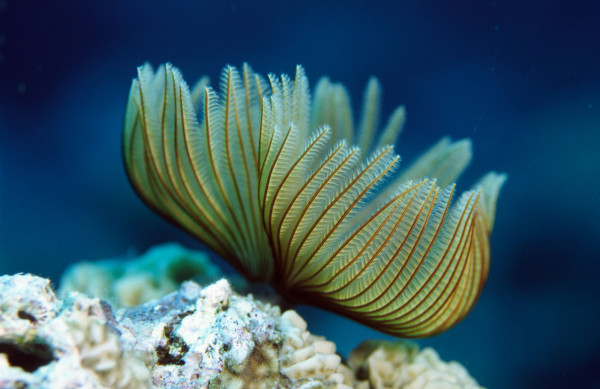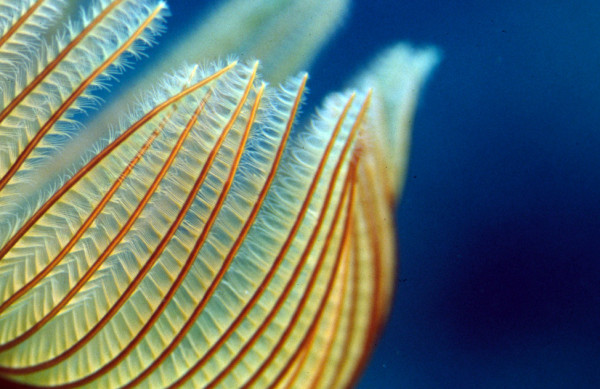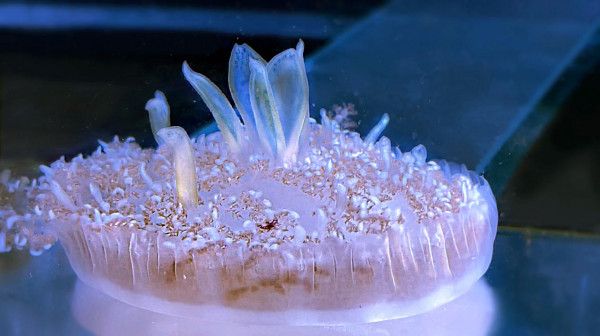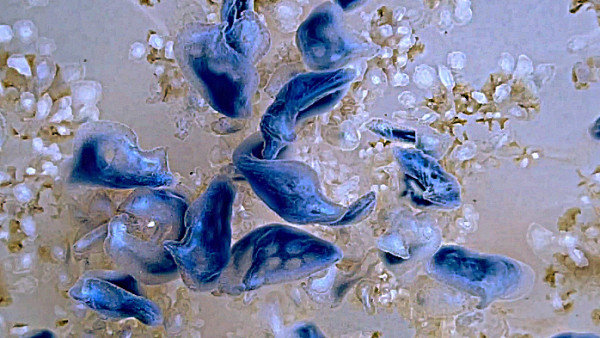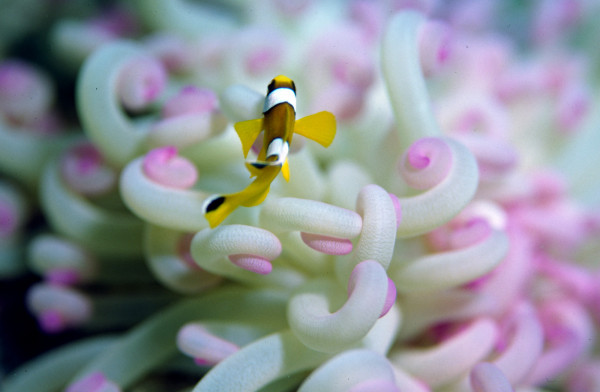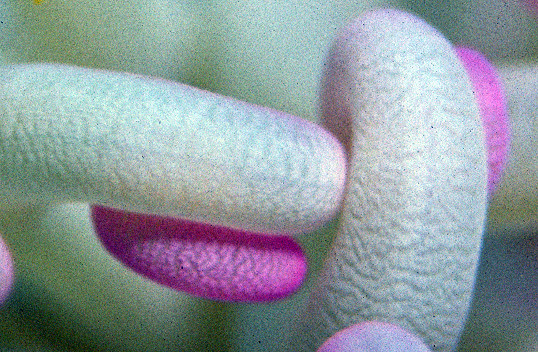The oceans are full of amazing creatures. Particularly in coral reefs, you will find true artworks of nature with an enormous splendour of form and colour. Our scientists have taken some great photos of these organisms on their diving expeditions. In our Ocean Quiz on our social media, we show you details of these images, and you can figure out what creatures you are looking at. We reveal the solution on this page one week later.
(Note for mobile view: there are several images, which are displayed by swiping over the image).
Feather duster worm (Sabellidae)
It looks like a flower, but it is a worm. With its filigree tentacle crown it filters finest suspended particles out of the water. The worm-like body part is stuck in a borehole for protection, e.g. in a living or dead stone coral. Once it has found its home, it does not leave it. If it is disturbed, it can retract its tentacle crown.
Photo: Claudio Richter
(Note for mobile view: there are several images, which are displayed by swiping over the image).
Mangrove jellyfish (Cassiopeia andromeda)
This jellyfish is special, it lives upside down. It carries symbiotic microalgae in its body, which perform photosynthesis and provide it with energy. Therefore, it usually lies with its umbrella on the seafloor and stretches its tentacles towards the sea surface and the sunlight.
At the ZMT, researchers are determining the nutritional value of various jellyfish species, including the mangrove jellyfish, and how it could be increased. Jellyfish contain many minerals, polyunsaturated fatty acids and, above all, a high proportion of protein and could become an alternative food resource in view of dwindling fish stocks.
Photos: Lisa Zimmermann, ZMT
(Note for mobile view: there are several images, which are displayed by swiping over the image).
Sea anemone (Heteractis magnifica) with clownfish
Sea anemones are semi-sessile – they move around very slowly crawling on their foot disc. Their tentacles are covered with cnidoblasts, with which they defend themselves and catch their food (plankton). Clownfish live in symbiosis with sea anemones. On their skin, the fish carry a layer of mucus that protects them from the poison of the cnidoblasts. Anemones and clownfish, which can be very aggressive, protect each other against their respective predators.
Photo: Claudio Richter





